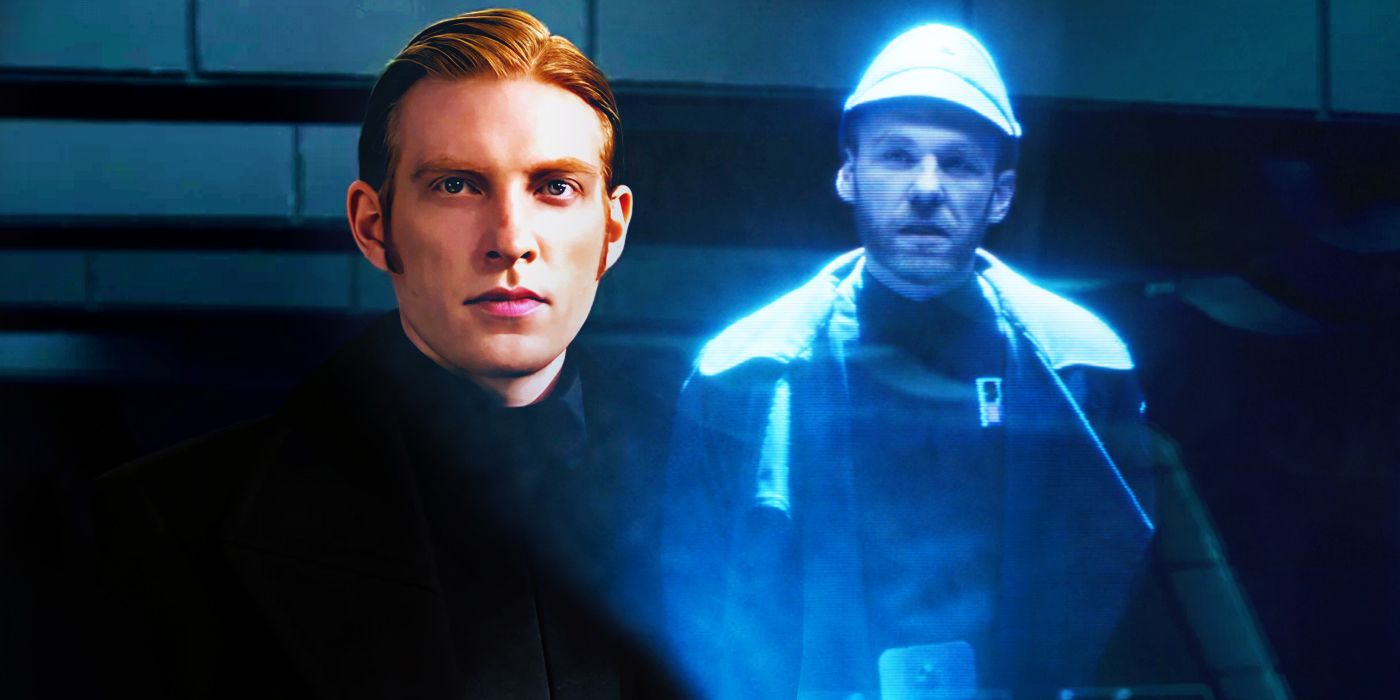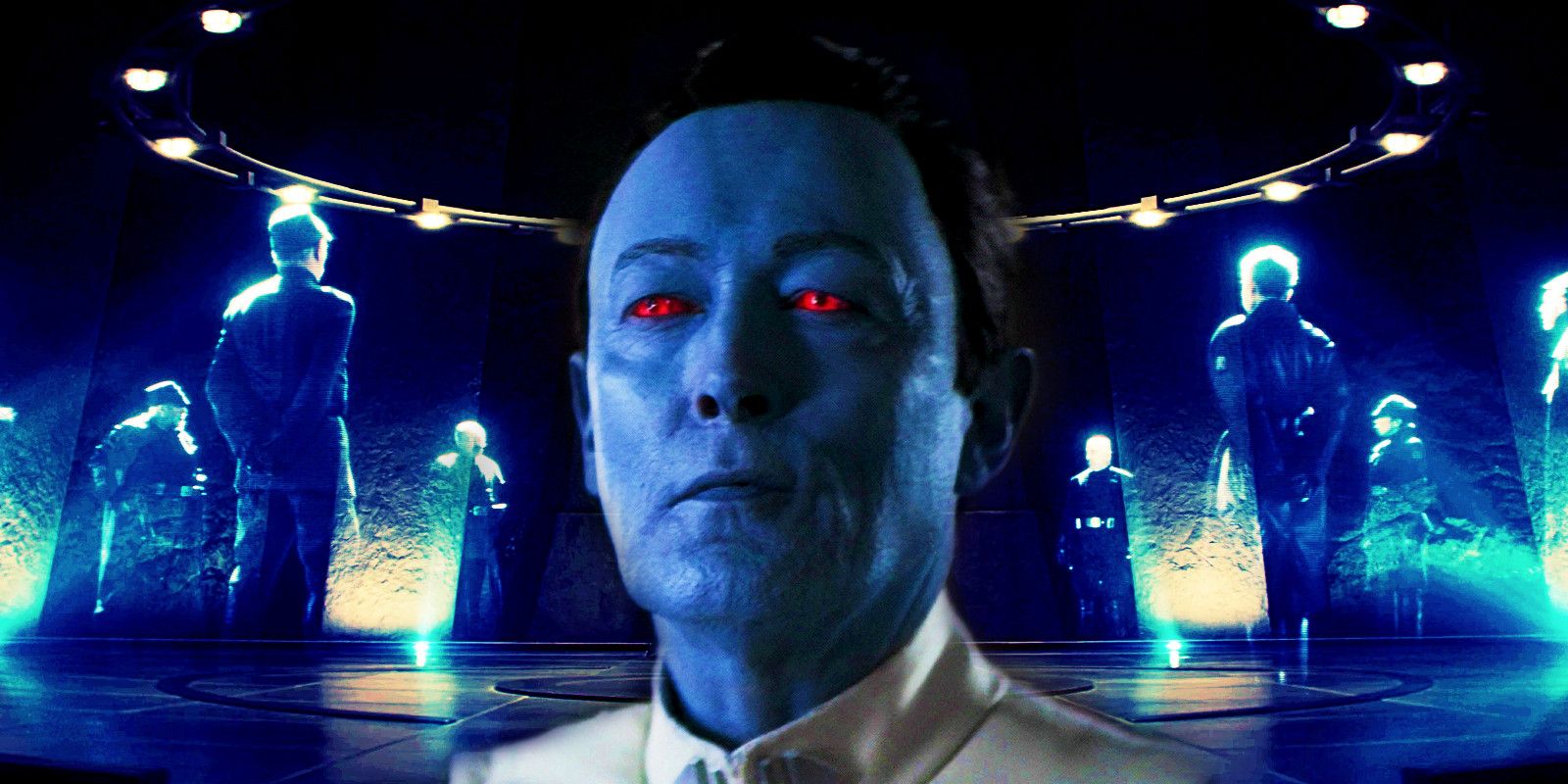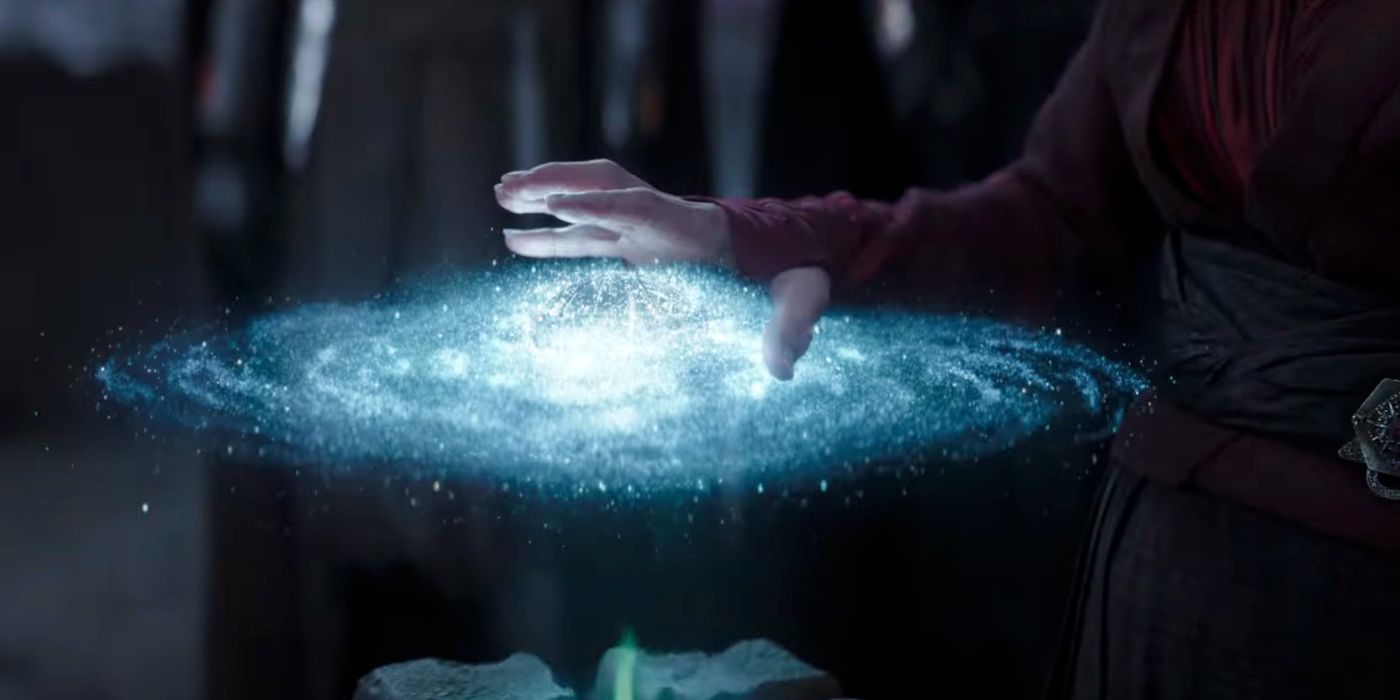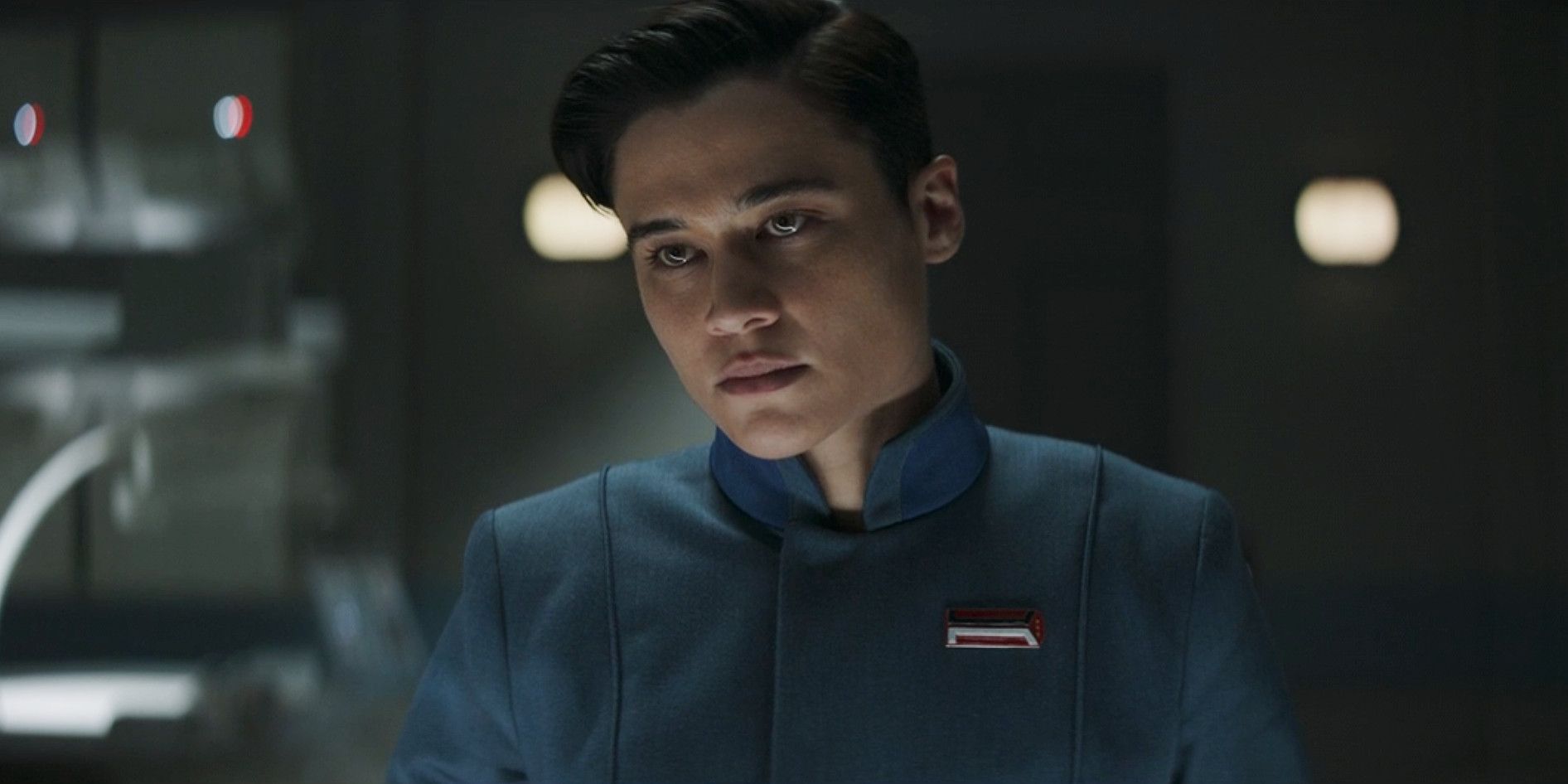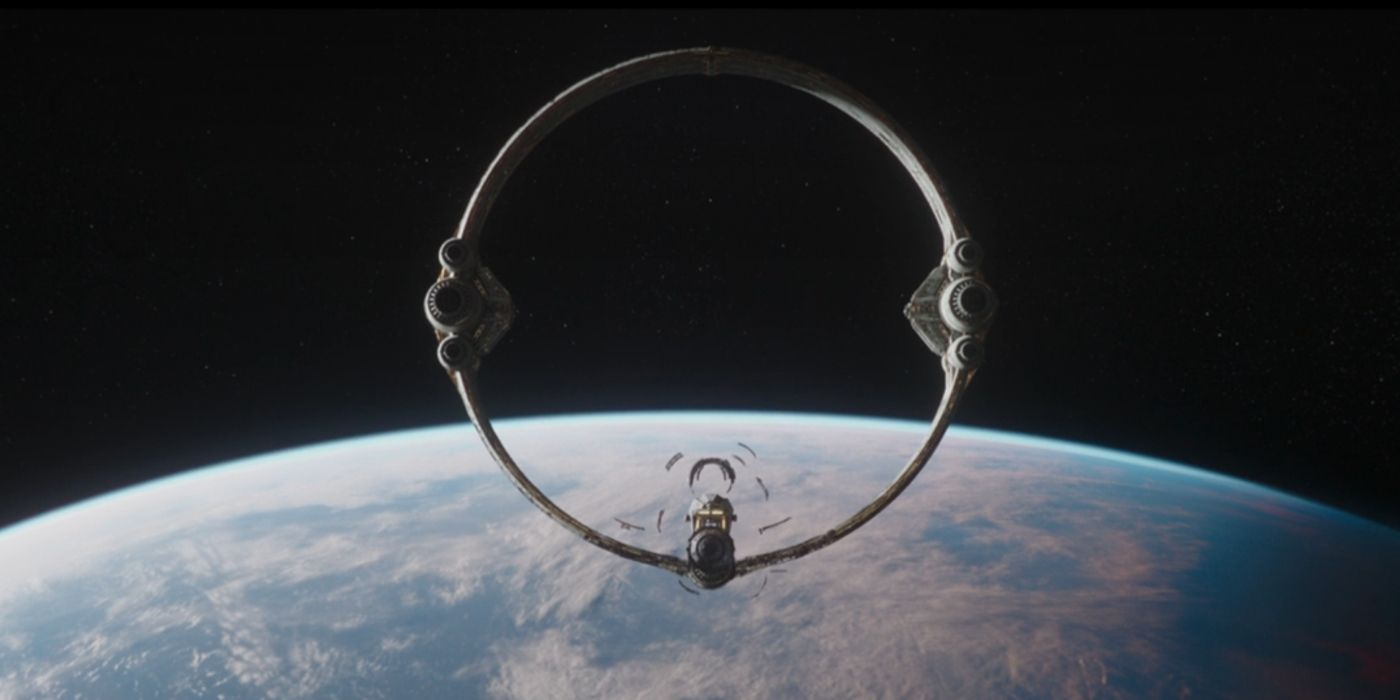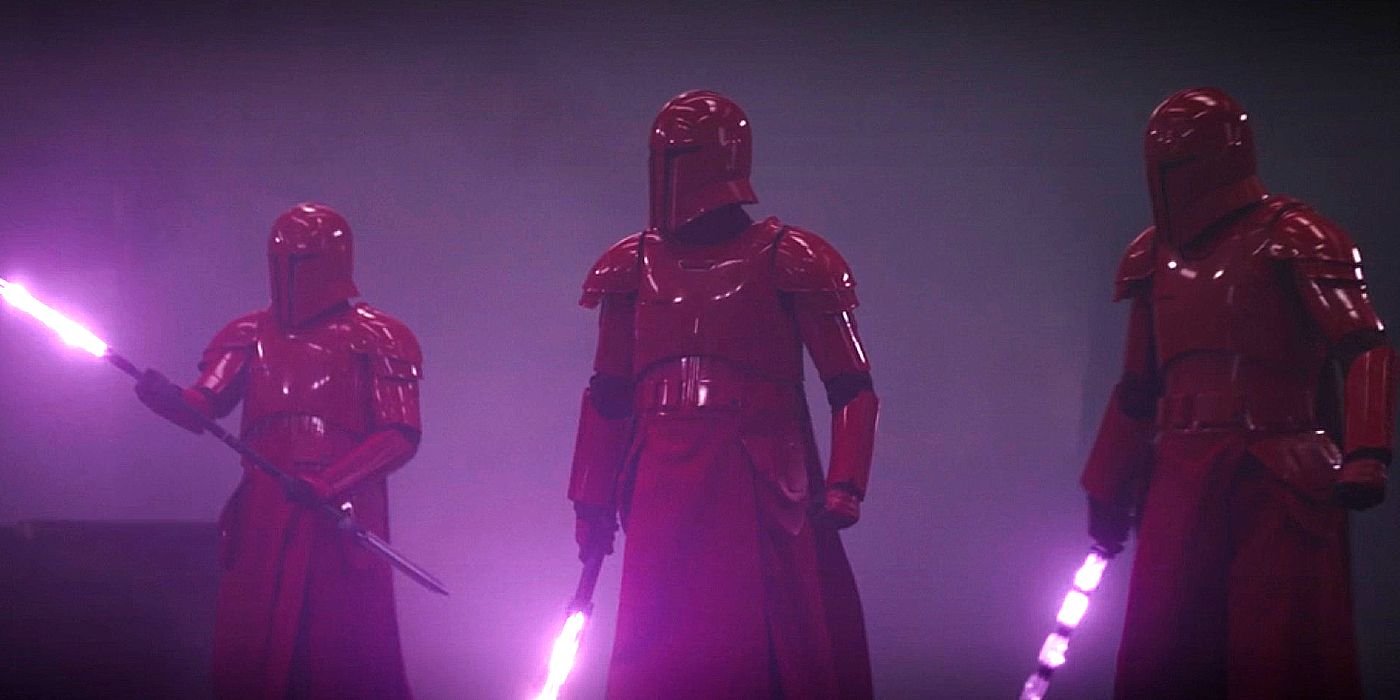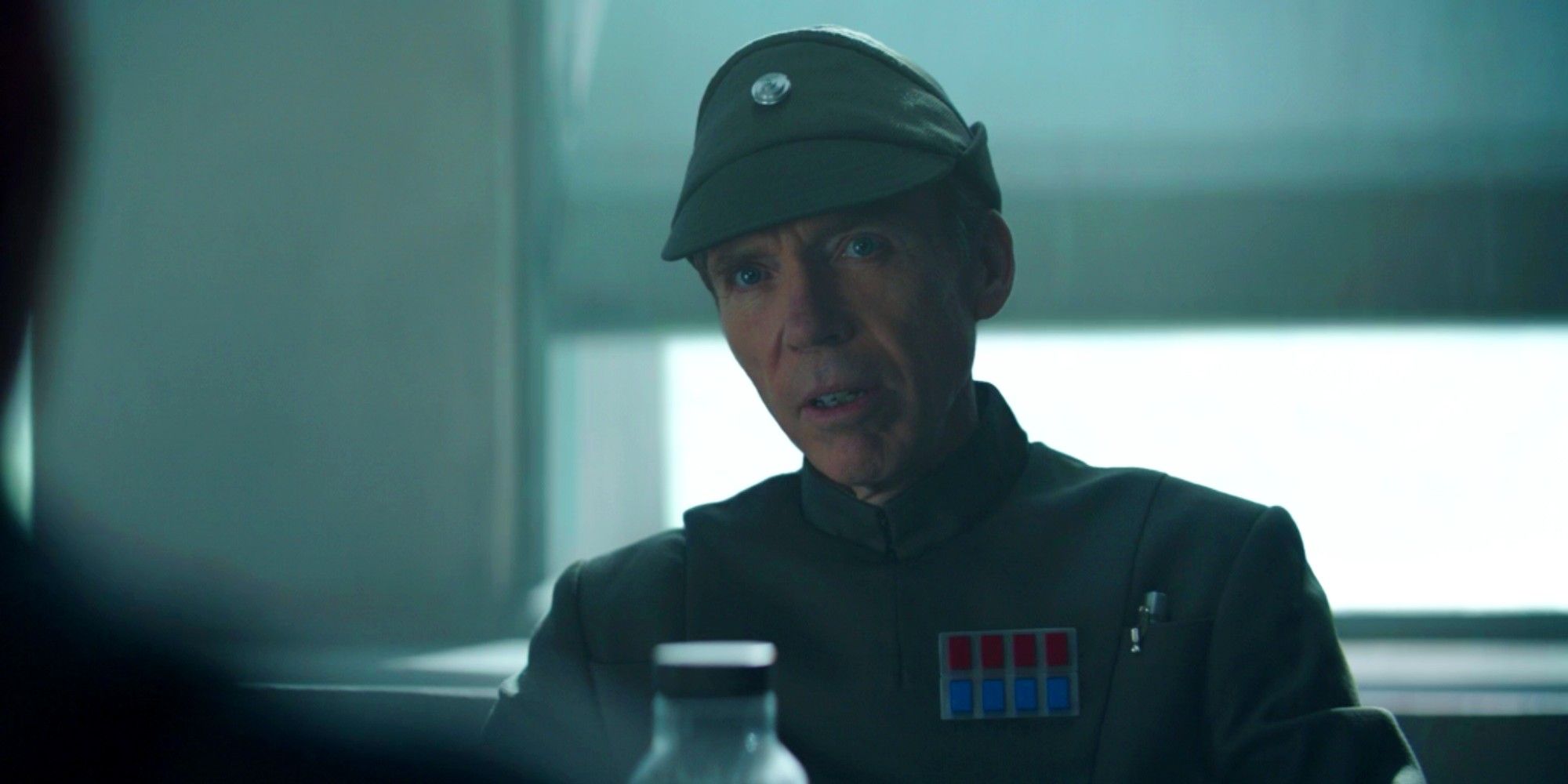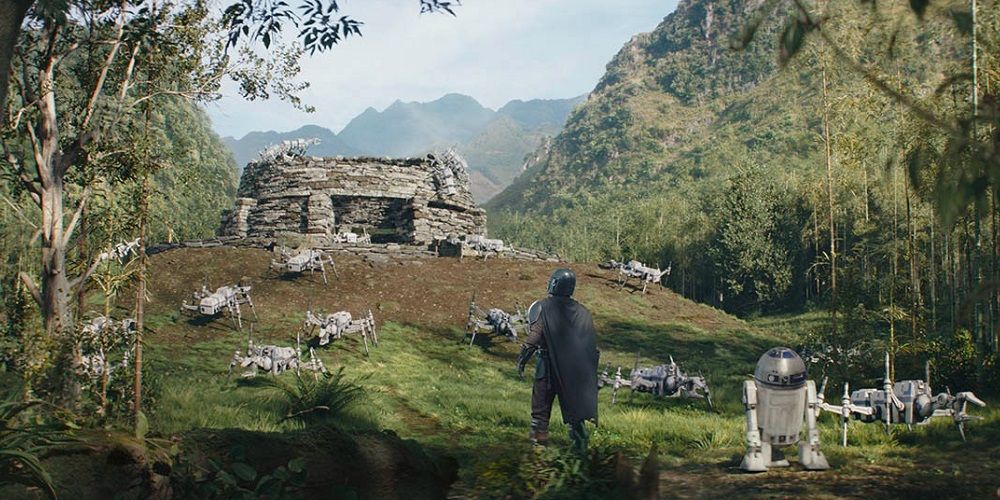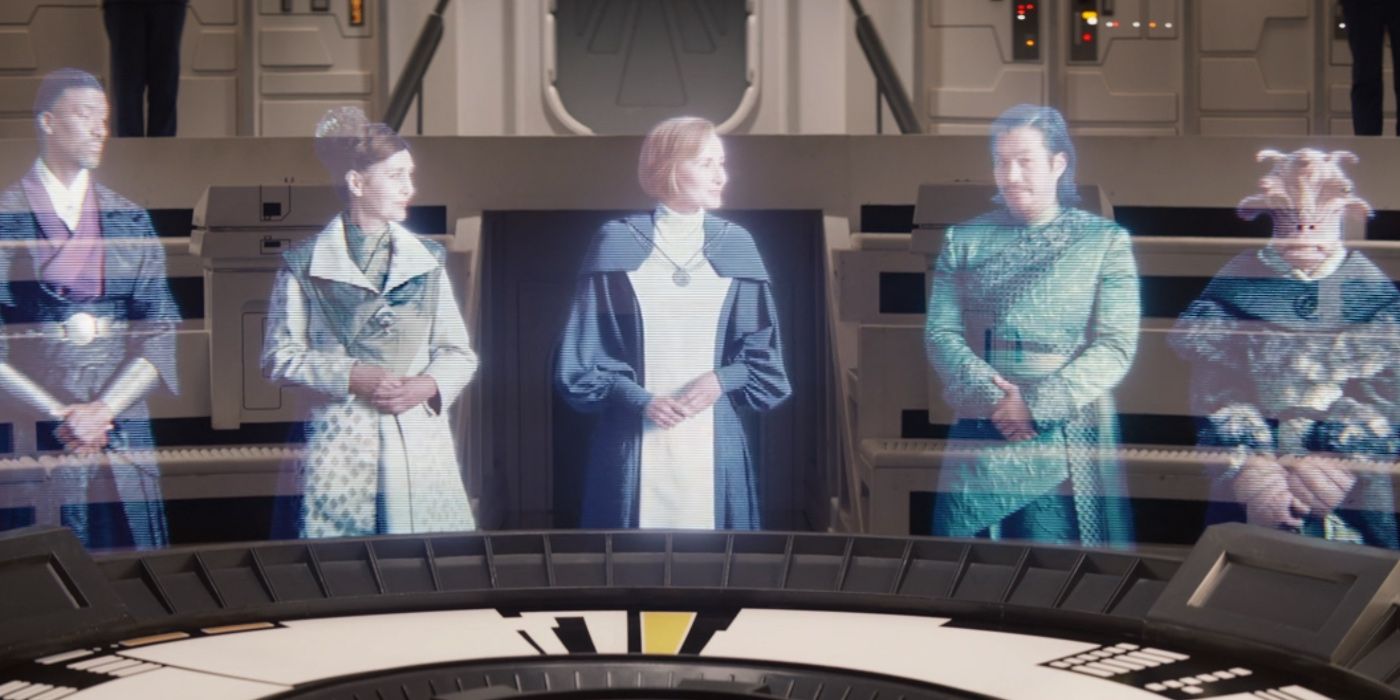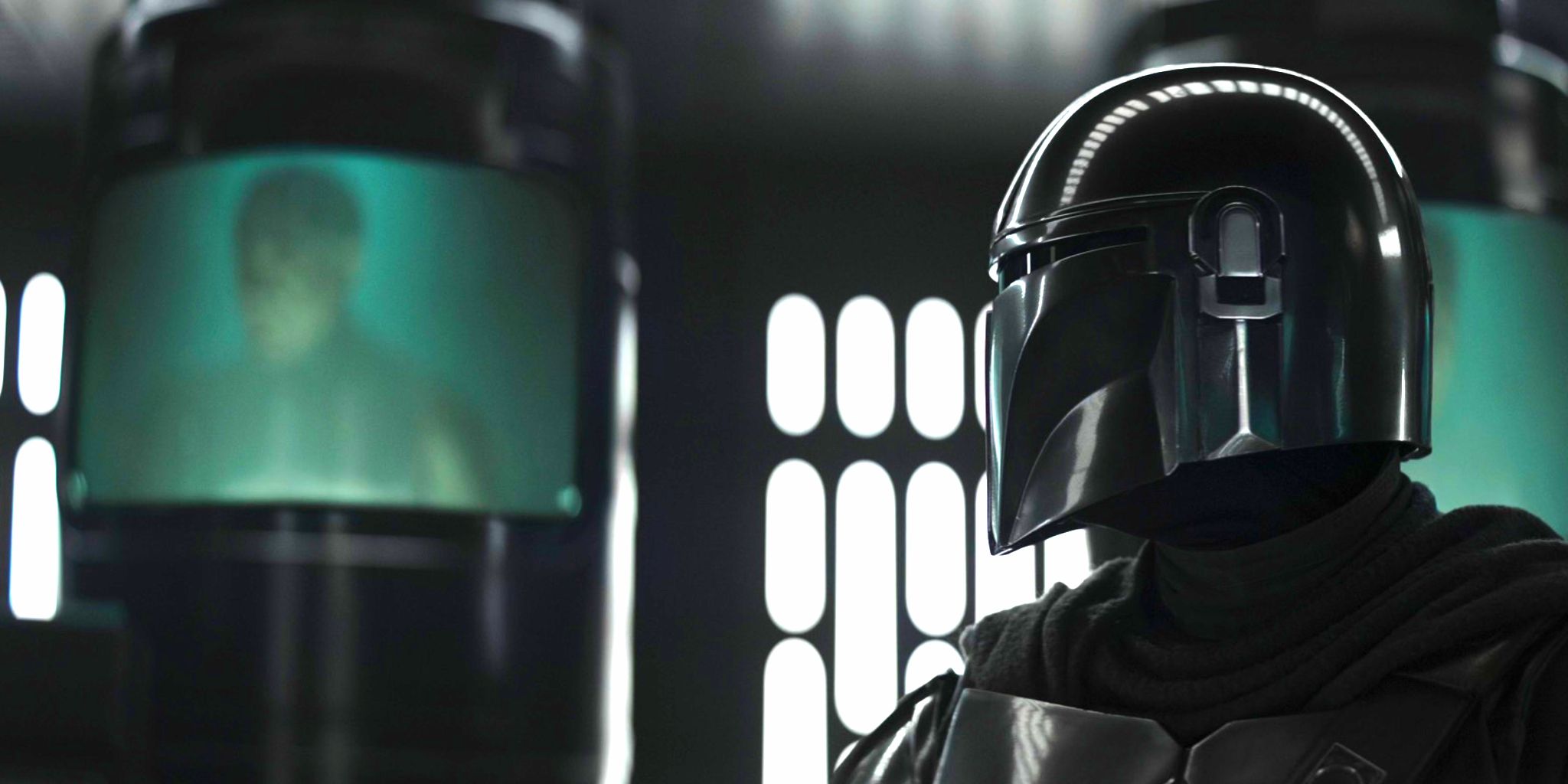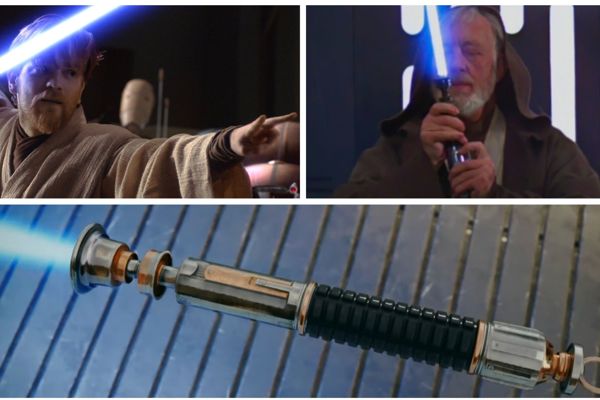
The Hidden Connection: How The Mandalorian & Ahsoka Foreshadow the Epic Star Wars Sequel Trilogy

The Mandalorian and Ahsoka's actions in the Star Wars sequel trilogy pave the way for the rise of the First Order, with General Hux, Thrawn, and Emperor Palpatine's resurrection Extragalactic threats, the New Republic's weaknesses, and Force-sensitive cloning play crucial roles
Summary
The Mandalorian
and
Ahsoka
are bridging the gap between
Return of the Jedi
and
The Force Awakens
, setting up the sequel Star Wars trilogy.
The Shadow Council and Grand Admiral Thrawn pose threats to the New Republic, distracting them from the rise of the First Order.
The heroes in these shows are facing threats from beyond the galaxy, which explains their absence in the Star Wars trilogy that follows.
The Mandalorian and Ahsoka play significant roles in setting up the sequel Star Wars trilogy in various ways. These two Star Wars series are vital components of the broader time period known as the "Mandoverse" or the New Republic Era. While The Mandalorian reflects the original trilogy's nostalgia, Ahsoka draws upon the prequel trilogy. However, both storylines serve as bridges between the events of Return of the Jedi and Star Wars: The Force Awakens.
The Mandalorian, being the first live-action Star Wars series, had the opportunity to be set in the galaxy's most significant historical era, allowing it to delve into the untold aspects of the First Order's ascension to power after the Empire's downfall. Ahsoka, also set in that same time period, is already beginning to lay the foundation for the story of the sequel Star Wars trilogy, which takes place many years later. Here are 10 notable ways in which these shows are accomplishing this.
10 The Rise Of The First Order's General Hux
General Armitage Hux, a prominent figure within the First Order, occupies a high-ranking position and collaborates closely with Kylo Ren. However, beyond written accounts, very little is known regarding his origins. A glimpse into his family background is provided through the appearance of his father, Brendol Hux, who is featured as a member of the Imperial Shadow Council in episode 7 of season 3 of The Mandalorian. Brendol demonstrates a certain degree of skepticism towards Moff Gideon's zealous interest in cloning, although it is highly likely that he will become involved in utilizing this research to resurrect Emperor Palpatine. As an original member of the Shadow Council, Hux's father was bestowed this position by Grand Admiral Rae Sloane. Under the guidance of the Grand Admiral, Hux, his son, and a select few others clandestinely constructed the foundations of the First Order within the enigmatic Unknown Regions.
9 The Focus Is On Thrawn, Not The Shadow Council
Apart from Brendol Hux and Moff Gideon, the Shadow Council poses a significant threat to the New Republic. The aftermath of Ahsoka's encounters will likely divert the New Republic's attention towards Grand Admiral Thrawn, making them oblivious to the activities of the Imperial Remnants. While Thrawn himself is a formidable adversary, the New Republic's narrow focus on him alone will inadvertently allow the entire Shadow Council to evade their grasp. This oversight will empower the council members to unite and clandestinely establish the First Order right under the nose of the unsuspecting New Republic, catching them off guard at precisely the right moment.
8 Extragalactic Threats From Ahsoka's Galaxy May Draw The Big Heroes
Ahsoka's introduction of intergalactic travel has profound implications for the galaxy's future. The potential arrival of new species or factions from the new galaxy poses a conceivable threat. Consequently, this might be the reason why the heroes of these shows, such as Din Djarin, Ahsoka, Bo-Katan Kryze, and others, are absent during the events of the sequel Star Wars trilogy. They could be the ones responsible for tackling these significant extragalactic threats while the heroes of the sequel trilogy concentrate on dismantling the First Order.
7 The New Republic's Amnesty Program Hides Imperial Moles
The New Republic Amnesty Program presents a valuable opportunity for former Imperial officers seeking redemption. However, as demonstrated in The Mandalorian season 3, episode 3, its effectiveness is not infallible according to the New Republic's expectations. Even individuals as obedient and well-meaning as Dr. Penn Pershing may feel compelled to violate regulations when barred from pursuing beneficial cloning research. While success stories like Captain Bombardier of Plazir-15 exist, the presence of individuals like Moff Gideon's officer Elia Kane highlights a significant concern. These moles infiltrate the New Republic, exploiting its system and sowing destructive seeds that may ultimately give rise to the First Order's authority.
6 Ahsoka's Hyperspace Ring Sets Up The Holdo Maneuver
Ahsoka episode 4 witnessed the formidable hyperspace ring, known as the Eye of Sion, suddenly appearing in the path of General Hera Syndulla's Ghost and her five X-wing escorts. While those aboard the Eye of Sion remained unharmed, apart from Hera and Captain Carson Teva, everyone else tragically perished in a move that bore a striking resemblance to Vice Admiral Amilyn Holdo's maneuver in Star Wars: The Last Jedi. This maneuver, famously known as the Holdo Maneuver, involved obliterating enemy ships through a calculated hyperspace jump. The captains, like Riyola Keevan of the Halcyon, adopted the term Holdo Maneuver to describe this tactic after witnessing Holdo's selfless sacrifice. The inclusion of the hyperspace ring in Ahsoka serves as an early example to speculate its influence on the development of this strategy.
5 The Mandalorian Introduces The Praetorian Guard
The formidable Praetorian Guard, initially introduced in The Last Jedi, made a compelling appearance in the final two installments of The Mandalorian season 3. Consisting of three guards, they were responsible for safeguarding Moff Gideon upon his request. Operating under the command of Brendol Hux, the Imperial Praetorian Guard was summoned by Gideon to aid in the liberation of Mandalore. These fiercely capable guards proved their might by eliminating Paz Vizsla and posing a significant threat to both Din Djarin and Grogu, only to be overcome through their collaborative efforts. Notably, they were subsequently chosen as personal bodyguards by Supreme Leader Snoke, presenting even Kylo Ren and Rey with a formidable challenge.
4 Imperial Remnants Are Forming The First Order
3 Luke Skywalker’s Jedi Temple On Ossus
As the Shadow Council covertly establishes the First Order, remnants of the Imperial forces are covertly revitalizing the Empire, particularly in the Outer Rim. Imperial general Valin Hess discussed with Din Djarin and Migs Mayfeld in The Mandalorian season 2, episode 7, how the New Republic's disarray empowers these remnants, allowing them to grow stronger each day. Despite their scattered and disorganized nature, each faction plays a role in maintaining authority and fostering loyalty on planets willing to trade their freedom for the perceived stability promised by the future dominance of the First Order.
The temple on Ossus, which Luke constructs for his Jedi Academy, is initially witnessed in Rey's Force vision in The Force Awakens. In this apparition, it is seen ravaged by a conflagration ignited by Kylo Ren. The Book of Boba Fett episode 6 reveals the construction of this temple to the characters of The Mandalorian, indicating that Grogu was intended to be its inaugural student before he ultimately chose to return to his adoptive father. Over the course of numerous years, this sanctuary will shelter Luke's pupils, which notably include Ben Solo. However, Kylo Ren's descent into darkness results in the ruin of the structure as well as the demise of all his fellow apprentices. In the future, it is possible that Jacen Syndulla, Hera's Force-sensitive son, may join the ranks of Luke's Jedi Temple.
2 The New Republic's Weakness Paves The Way For The First Order
Just as Valin Hess had stated, the New Republic is currently in a state of disarray, primarily due to a multitude of weaknesses. Most notably, their detrimental arrogance prevents them from actively pursuing and neutralizing the scattered Imperial Remnants across the galaxy. Instead of prioritizing imminent dangers, the New Republic has misguided focus, offering assistance solely to planets that pledge allegiance to their own government. Both The Mandalorian and Ahsoka exemplify the New Republic's disregard for Imperial Remnants, falsely assuming their superiority. Regrettably, this weakness will inevitably lead to their downfall, paving the way for the First Order to conquer and annihilate them.
1 Force Sensitive Cloning To Resurrect Emperor Palpatine
Poe Dameron's infamous line from Star Wars: The Rise of Skywalker, "Somehow, Palpatine returned," has been the only explanation for Palpatine's cloning until The Mandalorian. Throughout the series, there have been references to the Imperial Remnant's desire to create Force-sensitive clones using Grogu's blood, particularly through Moff Gideon. In The Mandalorian season 3, it is revealed that Gideon has been utilizing this technology to create clones of himself. It is highly likely that the knowledge gained from these efforts will be utilized to bring Palpatine back to life. In The Mandalorian season 2, episode 4, there is even an experiment on Nevarro that bears a striking resemblance to Supreme Leader Snoke. As Din Djarin gazes at the familiar figure, Snoke's theme from the Star Wars sequels plays in the background.
